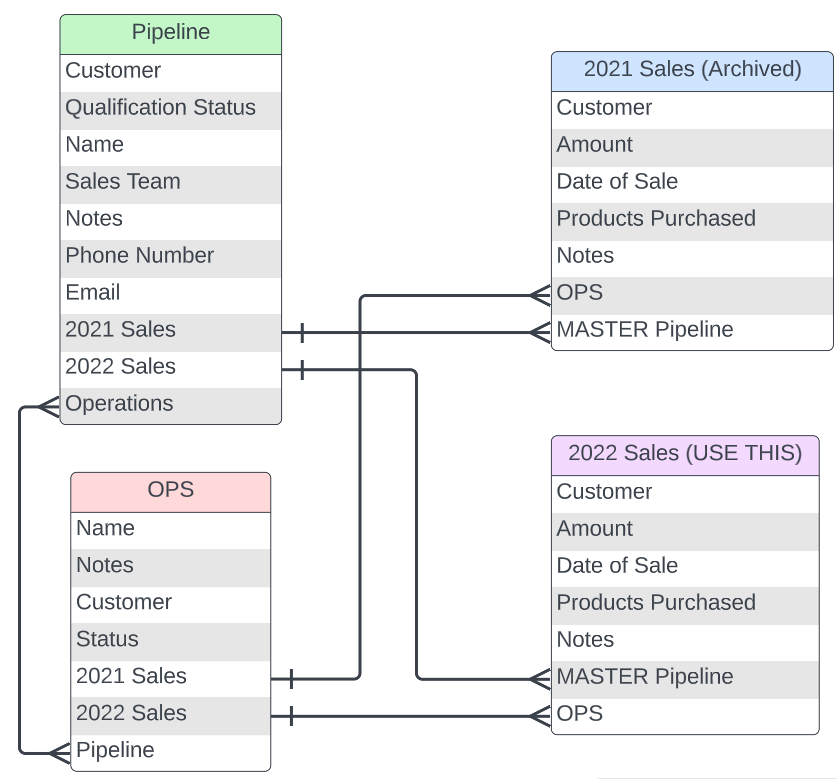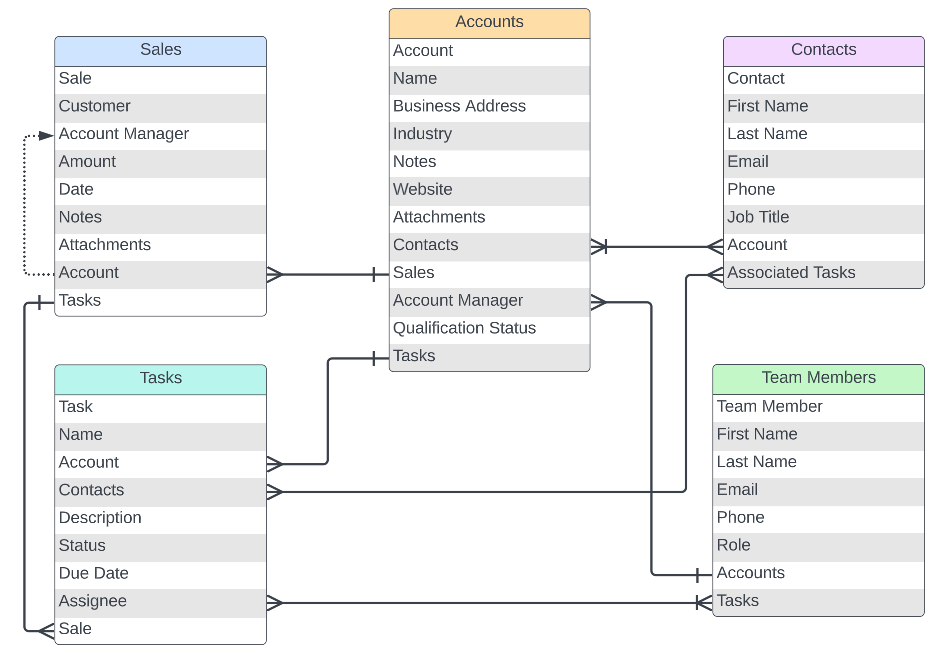Welcome to our Community Spotlight series, where we highlight great events, tips, and insights from Airtable’s vibrant community of champions.
In this edition, we're excited to feature Brennan Young, an Airtable champion who answered the question: What is one thing you wish you had known when you started using Airtable? With a complex and multifaceted masterclass on data design.
Here are Brennan’s seven tips for a smooth and successful journey with Airtable.
Your data should tell a story
Before transitioning your data to Airtable, take the time to analyze, optimize, and clean it. This crucial step ensures that your tables tell a meaningful and coherent story. Avoid tables with numerous empty fields and instead focus on creating semantic-friendly structures that align with your team's workflows.

Destigmatize complexity
Your data, workflows, and company are complex by nature. Instead of attempting to force simplicity onto this complexity, aim for organization and structure. Airtable shines when you embrace the inherent complexity of your data and focus on creating a well-structured foundation.
Really understand your processes and workflows
“Think about your workflow and your data. Now think about each thing or entity that exists in your data.” Says Brennan. That exercise will help you understand what your tables actually are and will help you adopt an “object-oriented design approach.”
In other words, each table should represent a specific object, and relationships between tables should reflect the natural flow of data within your organization. This approach not only enhances data clarity but also facilitates automated reporting and data-rich interfaces.

Use Rollups and Formulas for reporting
Need to keep your leadership team apprised of progress? It’s easy in Airtable, says Brennan. “With a few well-placed rollups and formulas, you have what you need to generate automated reports or visually engaging, data-rich Interfaces.” He says. “Every field has a purpose. Not only that, but each table only contains data that is relevant to a given record. There's no bloat.”
Learn how to add a rollup field or formula field
Embrace the relationships
Don't be afraid to establish relationships between multiple tables. (It’s not as complicated as it seems!) The relationships are a powerful way to organize and structure complex data. Look beyond a single-select or multi-select field and consider the long-term scalability and flexibility of your data structure.
Transform your spreadsheet thinking
Airtable's Grid View is a great starting point for beginners. Its spreadsheet-like interface makes it easy to get started and familiarize yourself with the platform. However, remember that it's essential to transcend the spreadsheet mindset and dive into the full potential of Airtable's capabilities.
“Whenever I'm about to build something within Airtable, my first step is to open up a diagramming tool.”
Unleash your creativity (with Interface Designer)
“I’m always striving to push my builds and deliverables into an Interface-exclusive user experience,” says Brennan. Unleash the power of Airtable's growing suite of features, including the intuitive Interface Designer. Explore and create dynamic, engaging interfaces that will help your stakeholders contextualize and better understand your data.
Huge thanks to Brennan Young for outlining such a thoughtful approach to data design. Read the original post or get started making your own in the Airtable Community today.